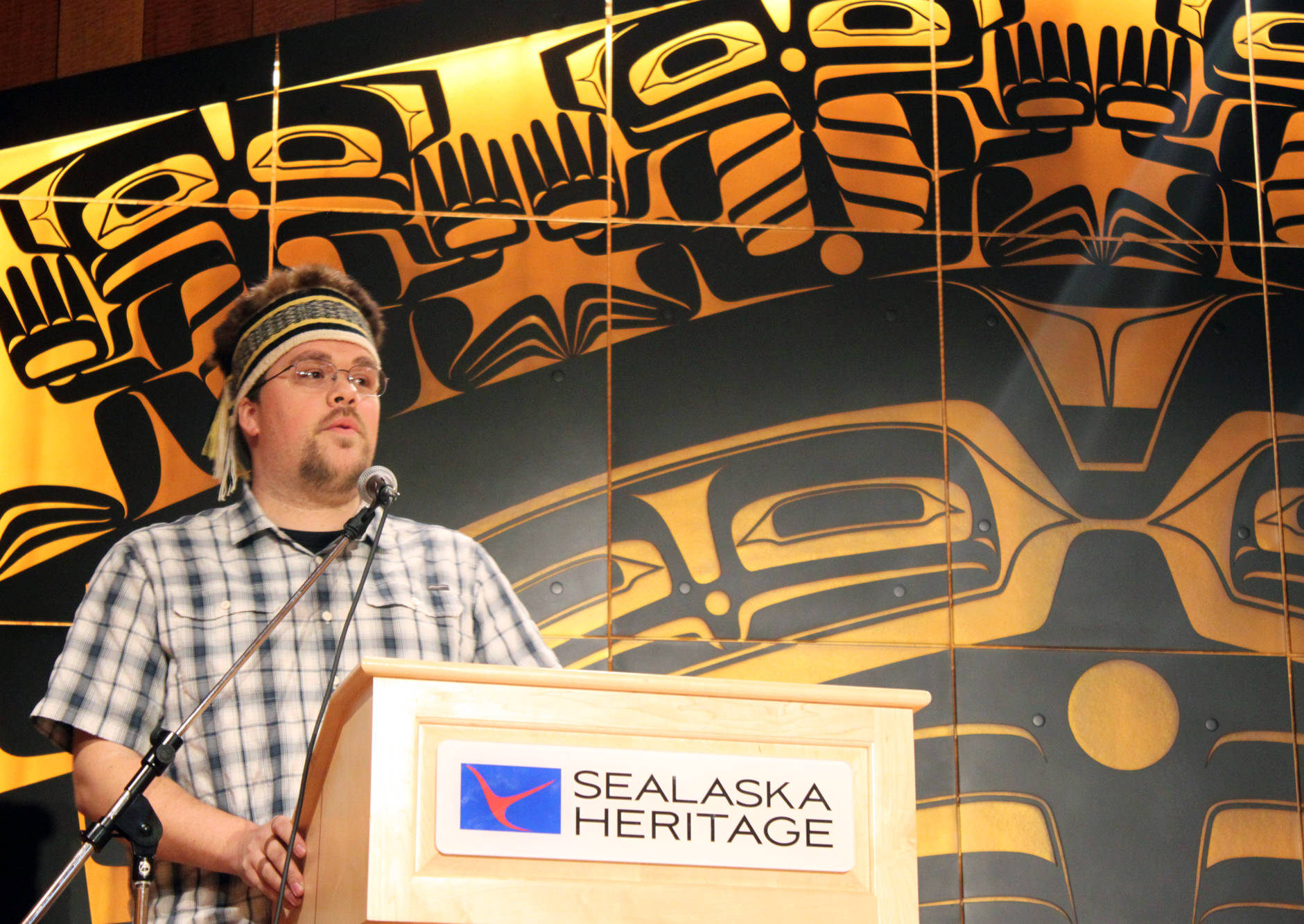Watching the Winter Olympics this past week, Sealaska Heritage Institute Senior Research Fellow Rick Harris saw something that surprised him.
The Canadian snowboarding team was on screen, wearing jackets that carried designs inspired by Tlingit and Kwakiutl artwork. Millions of viewers around the world were being introduced to formline designs of ravens and bears, thanks to the artwork of Canadian artist Corrine Hunt (who is of Tlingit and Kwakiutl heritage).
The appearance of that artwork further established what Harris already knows. Native art of the Northwest is not only culturally valuable, but it is also popular and could be an economic driver for Southeast Alaska.
That’s one of the main aims of the new Northwest Coast Arts Initiative that Harris and other Sealaska officials started in 2017. The initiative is looking to expand the markets of art from the Northwest and promote artists.
“We think that the economic potential of Northwest Coast Arts is underutilized,” Harris said.
At the moment, Harris and Sealaska are also working to fight with Alaska Native artists against a recent regulation. Etsy.com, a site where artists can sell their work, recently banned the sale of artwork that uses certain animal parts including ivory.
Though the regulation is likely meant to fight elephant poaching in Africa and India, it harms Alaska Native artists who use ivory from walrus tusks or other legal sources.
Harris said ivory isn’t the only issue, as there are also restrictions on using seal as well.
U.S. Sen. Dan Sullivan, R-Alaska, has already reached out to Etsy asking the site to change its policy to allow Alaska Native artists to sell items with ivory. While speaking at the Southeast Conference Mid-Session Summit on Tuesday, Harris said he hopes the conference will stick up for artists.
“What we’re asking Southeast Conference to do is also send a letter that would support Etsy changing its policy,” Harris said. “The letter is designed not to be negative, but suggesting that they’re kind of arbitrary in their decision and that Southeast Conference and others would be a property entity to come to to solve this problem.”
Harris said Sealaska has a letter written already, though he didn’t have it with him during this week’s summit. Southeast Conference Executive Director Robert Venables said Wednesday that the letter will go to the Southeast Conference Board of Directors, which is likely to approve it. The board meets once a month, Venables said, and due to the time-sensitive nature of this request, the board will try to send it sooner rather than later.
Harris also said he wanted Southeast Conference to form an arts committee. Southeast Conference is an organization that represents the economic interests of various industries in Southeast Alaska such as transportation, mining, tourism and energy. Harris said he’d like to see Southeast Conference have an arts committee.
Millions of tourists come through Southeast Alaska every year, and Harris said he hopes the Northwest Coast Arts Initiative can get some help from Southeast Conference to guide some of those visitors to artistry inspired by the area’s original inhabitants.
“It’s a diamond in the rough laying before us,” Harris said, “and we need to capture it.”
• Contact reporter Alex McCarthy at 523-2271 or alex.mccarthy@juneauempire.com. Follow him on Twitter at @akmccarthy.

